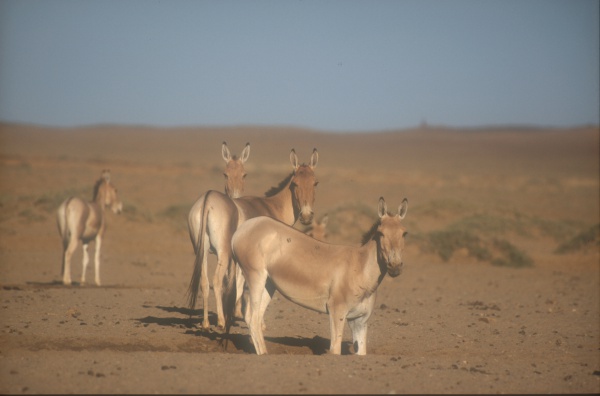Facts About Mongolian wild ass
The Mongolian wild ass, also known as the Mongolian khulan, is an intriguing subspecies of the onager that inhabits the deserts of southern Mongolia and northern China. Unfortunately, it once also ranged in eastern Kazakhstan and southern Siberia, but hunting has eradicated them from those areas. Currently, the species is classified as Near Threatened by the IUCN, with approximately 42,000 individuals remaining in Mongolia and about 5,000 in northern China.
These resilient animals, often referred to as Gobi khulan, flourish in the severe environments of the Gobi Desert, encompassing desert-steppe, semi-desert, and desert regions. Regrettably, their habitat has contracted substantially over the years. They are herbivorous, feeding on grasses, herbs, shrubs, and trees. During the spring and summer, succulent plants form an essential part of their diet.
The Mongolian wild ass confronts numerous threats, including poaching, competition with livestock for grazing, and predation by gray wolves and dholes. Poaching for their meat is particularly troubling, with about 20% of the population being poached annually. Changes in land use and evolving attitudes towards wildlife have further complicated conservation efforts.
Ongoing efforts aim to protect these animals. Mongolia afforded them full protection in 1953, and they are also covered under international agreements such as CITES and the Convention on Migratory Species. However, conflicts between herders and wild asses have escalated due to human population growth and harsh winters. Captive populations are scarce and primarily located in Chinese zoos.
The Mongolian wild ass has several close relatives, including the Turkmenian kulan, Persian onager, Indian wild ass, and the extinct Syrian wild ass. Understanding the unique biology of the Mongolian wild ass and differentiating it from other subspecies is crucial for developing effective conservation strategies.

 India
India